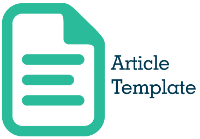IMPLEMENTATION OF FOUR BASIC PHYSICAL LAWS IN THE ADVENTURE GAME "ESCAPE LAND"
Abstract
There is no doubt that games are a big part of the technology that is experiencing rapid development. Many people think that games are only entertainment in their spare time, but during the development of technology, games are also included in the category of learning media. Games are often used as simulation media in large companies and developing companies, not only on a company scale but in education they can also use games as an alternative media for limited learning facilities, as well as tools and materials owned by these educational institutions. In this study, the author will try to make a game that functions not only as an entertainment medium but also as learning for all people, especially students in the field of science to improve skills in the field of physics. The game that the author wants to make, elements in the game are not fixated by learning like in class in general, but the author provides a challenge in the game in the form of exciting adventures so that the game players consciously or unconsciously can learn the physics of the science-packed in the game.
Downloads
References
F. Gunawan, "Adventure Game Application for Children as a Media for Learning Flora and Fauna in Indonesia," J-Intech Journal of Information and Technology, vol. 3, no. 1, pp. 52-55, 2015.
MR Rahadi, KI Satoto, and IP Windasari, "Designing Game Math Adventure as an Android-Based Mathematics Learning Media," Journal of Computer Technology and Systems, vol. 4, no. 1, 2016.
SN Wahid and AM Kurniawan, "Designing Games for Snakes and Ladders for Media Learning Physics," Journal of Qua Teknika, vol. 7, no. 2, pp. 47-53, 2017.
OA Randle, OO Ogunduyile and NA Fashola, "A Comparison of Performance of Supervised and Unsupervised Machine Learning Techniques in Evolving Awareness / Come on Game Player," International Journal of Game Theory and Technology (IJGTT), p. 1, 2015.
RG Abadi, "Designing Android-based Game Fun with Physic Applications," Negri Alauddin Islamic University, Makassar, 2016.
IGW Antara, IGM Darmawiguna and IMG Sunarya, "Development of Jegog Games Based on Android," National Journal of Informatics Engineering Education (JANAPATI), vol. 4, no. 2, pp. 50-57, 2015.
WN Solehah, "Making Game Application" Habit Education "Based on Android," AMIKOM College of Information and Computer Management, Yogyakarta, 2016.
N. Oktavia, A. Sofia, L. Tyas, NI Khasanah and NR Marfu'ani, "Making Construct 2 Based Educational Games as Physics Learning Media for Junior High School Students," in Proceedings of the National Seminar on Physics and Applications, Jatinangor, 2015.
W. Pratama, "Pandora's Adventure Game Mystery Box," Journal of Telematics, vol. 7, no. 2, pp. 13-31, August 2014.
K. Bashir, "Development of Computer-Based" Phy Detective "Learning Media to Increase Middle School Students' Interest in Learning," Semarang State University, Semarang, 2013.
D. Eridani, PI Santosa and R. Ferdiana, "Implications of 2D and 3D Educational Games: Knowing the Letters and Numbers for Children," JNTETI, vol. 3, no. 1, pp. 1-5, 2014.
Copyright (c) 2019 JARES (Journal of Academic Research and Sciences)

This work is licensed under a Creative Commons Attribution-ShareAlike 4.0 International License.
Authors who publish with this journal agree to the following terms:
- Copyright on any article is retained by the author(s).
- Author grant the journal, right of first publication with the work simultaneously licensed under a Creative Commons Attribution License that allows others to share the work with an acknowledgement of the work’s authorship and initial publication in this journal.
- Authors are able to enter into separate, additional contractual arrangements for the non-exclusive distribution of the journal’s published version of the work (e.g., post it to an institutional repository or publish it in a book), with an acknowledgement of its initial publication in this journal.
- Authors are permitted and encouraged to post their work online (e.g., in institutional repositories or on their website) prior to and during the submission process, as it can lead to productive exchanges, as well as earlier and greater citation of published work.
- The article and any associated published material is distributed under the Creative Commons Attribution-ShareAlike 4.0 International License







